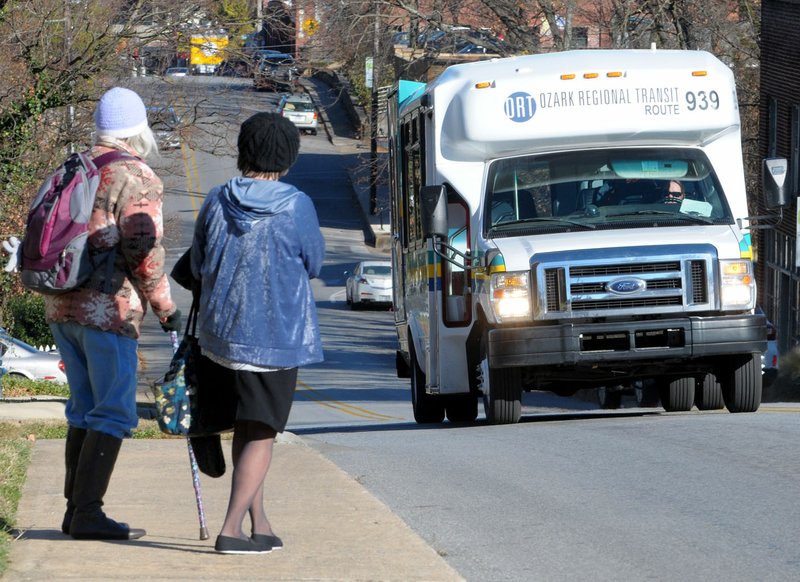SPRINGDALE -- Ozark Regional Transit is looking at a $338,000 shortfall in next year's budget and will likely have to ask for more money from the cities and counties it serves or cut routes and hours of service.
"We've got to make this balance one way or the other," Joel Gardner, executive director, told board members Thursday.
One toke over the line
Ozark Regional Transit has a new drug and alcohol policy for employees but, like many other entities, they’re trying to figure out how to deal with medical marijuana, which Arkansas voters approved last year. “If you’ve got a medical marijuana card, you’re gonna be shut out,” said Gail DeLancy, ORT’s human resources director. “You won’t be driving for ORT.”
At issue is marijuana is still a Schedule 1 drug under federal law and ORT receives federal funds. Federal law also generally trumps state law, according to Tom Kieklak, attorney for the transit service. He said state and federal officials are trying to make their policies match. “It’s gonna take five or 10 years to figure it all out,” Kieklak said. “We’re going to figure it out. There may be a little friction, but we’ll figure it out.”
DeLancy said ORT has only had a couple people test positive for banned substances over the past two years and they no longer work for the transit provider.
Source: Staff Report
Gardner said ridership is down, advertising income is down, operating and maintenance costs for the system's mostly borrowed buses are up. That's in addition to Washington County cutting $100,000 from its contribution and George's poultry company dropping a sponsored route in Springdale.
Don Marr, a transit board member and chief of staff for Fayetteville Mayor Lioneld Jordan, said the city already approved next year's budget and it's hard to go back and make adjustments at this point. Marr said requests for more money should have come sooner.
"Surely, you had to know you had the potential for this shortfall earlier," Marr said. "Our council is not going to like it. I dread going and asking them."
Gardner said he plans to talk to any city or county if they will listen to a plea for more money.
Gardner listed the reasons for the shortfall: Ridership hasn't recovered from the devastating fire in January that destroyed most of the fleet and is down about 17 percent year-over-year; the "skittles fleet" of multi-colored, loaner buses cost more to maintain because they are from different manufacturers; vehicle wraps, the most profitable part of advertising, is gone because the borrowed rolling stock is subject to immediate recall by the owners. Each wrap costs about $6,000, which the transit service would have to eat if a bus was recalled, Gardner said.
"We're nine months removed from the fire and the ridership isn't taking a nose dive, but it's not coming up either," Gardner said. "The majority of it is people found alternatives or went back to what they were doing and haven't come back."
Marr said Fayetteville wanted to look at adding service time and routes but Ozark Regional is essentially asking for more money to pay for less ridership. Marr said a lot of the population that really needs the bus service do not live in the corridors where routes could be compressed.
Gardner said Ozark Regional Transit doesn't have a pool of money to draw on to get through a rough patch. The transit provider can look at adjusting routes to make them more efficient and cutting hours of operation on each route.
"We're trying to build momentum for people who want transit but momentum is built by more frequency to areas that people want to go," Marr said. "So, it's counterproductive to say let's reduce hours and routes."
Gardner said routes have been established where the cities and counties want them for the most part.
"Strategically, we have to ask ourselves, does it do any good to cut an hour and a half off a really long loop that nobody's going to ride anyway," Marr said. "Or, is it better to look at these and design them on ridership and frequency to reduce how far we're going and to see if we can build ridership back?"
NW News on 12/01/2017

